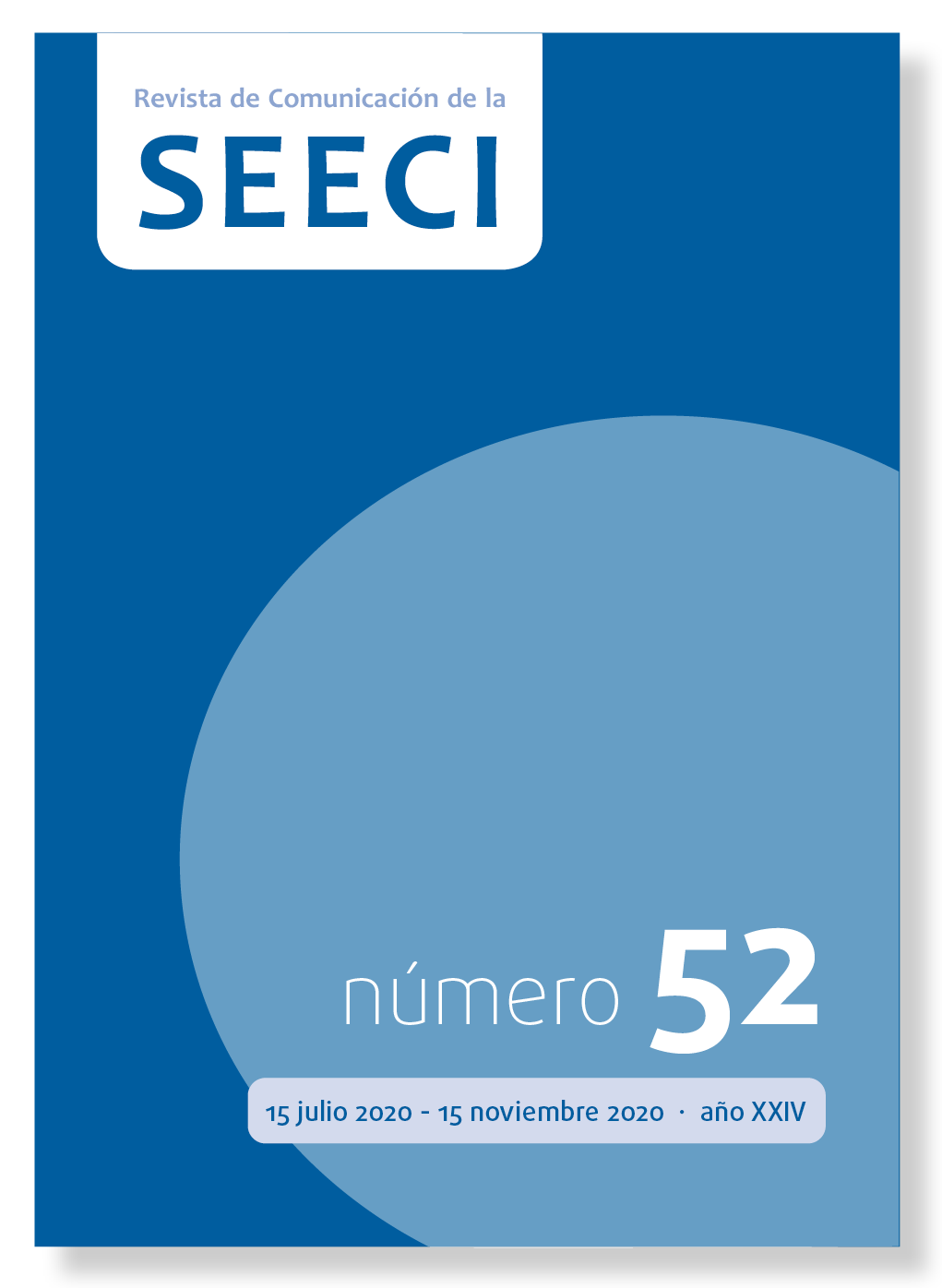The time of digital humanities Between art history, cultural heritage, global citizenship and education in digital skills
Main Article Content
Abstract
Digital Humanities pose a field of research, teaching and creation of great challenges. When disciplines such as art history are projected in preservation, study and dissemination of Cultural Heritage, the main obstacle in the current times may be the lack of mastery of digital skills that allow effective use of the tools that are available to global citizens They, in their double role of info-citizens and cyber-activists, require adequate training to beneficially impact on cultural heritage. Art History could play a leading role if it assumes the use of digital tools such as Google Arts & Culture, thus embracing the potential of Digital Humanities on whose site it could be registered. Proper information management, including its effective dissemination, is vital for the protection of cultural heritage. That is why the benefit that can be obtained, on the grounds of the disciplines traditionally associated with the study and dissemination of cultural heritage, from the digital tools available is very valuable. Analyzing the possibilities of Google Arts & Culture from the perspective of Digital Humanities would open a bouquet of possibilities for the new global citizen who is in the search for participation channels that may allow him to express himself, connect and get to know the world around him better.
Downloads
Article Details
The Journal of Communication of SEECI recognizes and promotes copyright rights, as well as the need to disseminate knowledge in an accessible and equitable manner. Our journal operates under a Creative Commons License CC BY-NC 4.0, which allows authors and users to:
- Share and Adapt: Copy, redistribute, and adapt the material published in the journal in any medium or format.
- Attribution: Properly acknowledge authorship and provide a link to the license, indicating if any changes have been made.
- Non-Commercial: Do not use the material for commercial purposes without the express permission of the authors and the journal.
- Authors retain copyright and may enter into non-exclusive agreements for self-archiving, deposit, or distribution of the publisher's version published in this journal, including institutional, national, or international repositories, and personal websites.
References
Aranguren, C. (2012). Ciudadanía intercultural: diversidad, diferencias, tolerancia y paz”, ACTUAL Investigación, 72(45), 9-19.
Ballart, J. (2002). El patrimonio histórico y arqueológico: valor y uso. Barcelona: Ariel.
Ballart, J. y J. Tresserras (2001). Gestión del patrimonio cultural. Barcelona: Ariel.
Bayer, A. (2014). Evangelizing the ‘Gallery of the Future’: a critical analysis of the Google Art Project narrative and its political, cultural and technological stakes, (Thesis dissertation for the degree of Master of Arts). University of Western Ontario, Canada.
Beil, K. (2013). Seeing syntax: Google art project and the twenty-first-century period eye. Afterimage, 40(4), 22.
Bourdieu, P. (1984). Distinction: a Social Critique of the Judgement of Taste. Cambridge: Harvard University Press.
Calderón Garrido, D.; Gustems Carncier, J. y Durán Castells, J. (2016). Música y movimiento en Pixar: las UST como recurso analítico. Revista de Comunicación VIVAT Academia, XIX(136), 82-94. doi: https://doi.org/10.15178/va.2016.136.82-94
De Pew, K. (2004). A Review of Cyberactivism: Online Activism in Theory and Practice. Kairos, 9(1).
Espinosa, J. (2017). Cuestiones de inmunidad. El patrimonio en el escenario de la globalización electronica. Revista PH, Instituto Andaluz de Patrimonio Histórico, (91), 134-135.
Fernández, J. (1999). Introducción a la conservación del patrimonio y técnicas artísticas. Barcelona: Ariel.
González, S. (2005). La ciudad venezolana. Una interpretación de su espacio y sentido en la convivencia nacional. Caracas: Fundación para la cultura urbana.
Google (2011). Explore museums and great works of art in the Google Art Project. [Official Google Blog]. Recuperado de https://googleblog.blogspot.com/2011/02/explore-museums-and-great-works-of-art.html
Irvine, M. (2017). Experiencing Culture in the Digital Age with Google Arts & Culture. [Media Theory and Meaning Systems Blog]. Georgetown University.
Jaber, R. (2016). Ethics in Online Activism: False Senses of Social Action or Effective Source of Change? Carnegie Council for Ethics in International Affairs. Recuperado de https://www.carnegiecouncil.org/publications/articles_papers_reports/770
Pastoriza, J. (Ed.) (2014). Educar para la ciudadanía global. Vigo: Fundación Isla Couto.
Proctor, N. (2011). The Google Art Project: A New Generation of Museums on the Web? Curator, the museum journal, 54(2), 215–221.
Recht, R. (2014). Pensar el Patrimonio: escenificación y ordenación del arte. Madrid: Abada.
Rotman, M. (2003). Globalización y patrimonio cultural: la recreación de las identidades locales. Revista Runa, XXIV, 257-271.
Sánchez Rodríguez, V. (2012). Video musical y cultura: propuestas para analizar el cuerpo en el videoclip. Revista de Comunicación VIVAT Academia, XIV(120), 91-101.
Tamayo, U. y Rincón, V. (2017). Comunicación Social para el desarrollo humano. Revista de Comunicación de la SEECI, XXI(42), 14-25. doi: https://doi.org/10.15198/seeci.2017.42.14-25
Unesco (2015). “#Unite4Heritage campaign launched by UNESCO Director-General in Baghdad”, Marzo, 2015. Recuperado de http://whc.unesco.org/en/news/1254
Vega, P. y Padilla. L. (2014). Ciudadanía global y Educación. Ciencia y Poder Aéreo, (9), 201-207.
Viñuela Suárez, E. (2015). La música como elemento satírico en la edición de vídeos de contenido político en Youtube: el uso del autotune. Revista de Comunicación de la SEECI, XIX(37), 268-298.
Waelder, P. (2011). Google Art Project, en el museo imaginario. Arte y Cultura Digital. Recuperado de http://laboralcentrodearte.uoc.edu/?p=1308
WGA (2017). Web Gallery of art. Recuperado de http://www.wga.hu/





